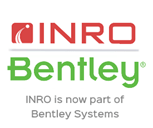How Australian motorways can be smarter if we unlock their value
Nial O'Brien & Mark Henaway
Aurecon, New South Wales
This presentation was delivered at the 2021 Online Conference Series and until October 2022 is only available to registered delegates and Content Access Pass holders via Interchange. For information on accessing this and other presentations please review the Content Access Pass options.
ABSTRACT
The implementation of smart technologies on motorways is widely acknowledged among traffic engineers for the benefits they provide for a customer's end to end journey. Unfortunately, the term'smart motorway' has however received negative international press where the application of hard shoulder running has been added to a smart motorway. The consequence of this is the negative perception by customers that unnecessarily clouds the benefits of smart technologies, and therefore has the potential to influence future funding for smart motorway implementation.
This presentation will emphasise and provide support to the idea that despite the negative publicity, we can ensure our motorways flow as efficiently and seamlessly as possible through improved technology and better understanding of the data that we collect on our transport networks. Smart technologies enable us to better understand the specific functions of each corridor and determine performance measures that best reflect their use.
Achieving the necessary level of integration includes the use of digital traffic management systems which are being installed on some of our motorways and freeways. These pre-emptive systems can improve safety, manage traffic flows, plan for network incidents and disruption, and make roadway maintenance easier and safer.
The digital data collected from traffic management systems allows motorway operators to better understand traffic movements along corridors and determine performance measures for traffic operations and road asset maintenance. They deliver better travel reliability and real-time traveller information. When these systems are installed in, and alongside roads, they are termed'smart motorways' or'managed motorways' depending on the location. They allow transport networks to operate smarter.
We will also unpack some of the negative press around the world on smart motorways, how this can be managed better and how customer confidence can be restored or maintained.
Author(s)
Nial O'Brien | Aurecon
Nial O'Brien is the Aurecon Global Roads Capability Leader. Nial is a Chartered Professional Engineer in Civil Engineering and a Fellow of Roads Australia with over 20 years of experience in planning, design and management of highways and civil infrastructure projects. Nial has seen the completion of many major road projects around the world through his role as the Aurecon Global Roads Capability Leader.
Nial is also a passionate contributor at the Indigenous Australian Engineering Schools in Sydney, which provide support and encouragement for Indigenous Australian high school students to progress into engineering.
Mark Henaway | Aurecon
Mark Henaway is a Chartered Professional Engineer in Electrical Engineering and an Associate Roads in Aurecon's Sydney office with over 30 years of experience in the project management, design, construction, maintenance and operations of traffic signals, road lighting, tunnels, and arterial and motorway Intelligent Transport Systems.
Mark has directed complex projects from concept to fully operational status in Australia, United Arab Emirates and Qatar.
Mark is a passionate and enthusiastic supporter of Indigenous Australian high school students choosing engineering as a career, through his participation with the Indigenous Australian Engineering School, CSIRO's Indigenous Girls STEM Academy Steering Committee, and Engineers Australia Indigenous Engineers Group.








